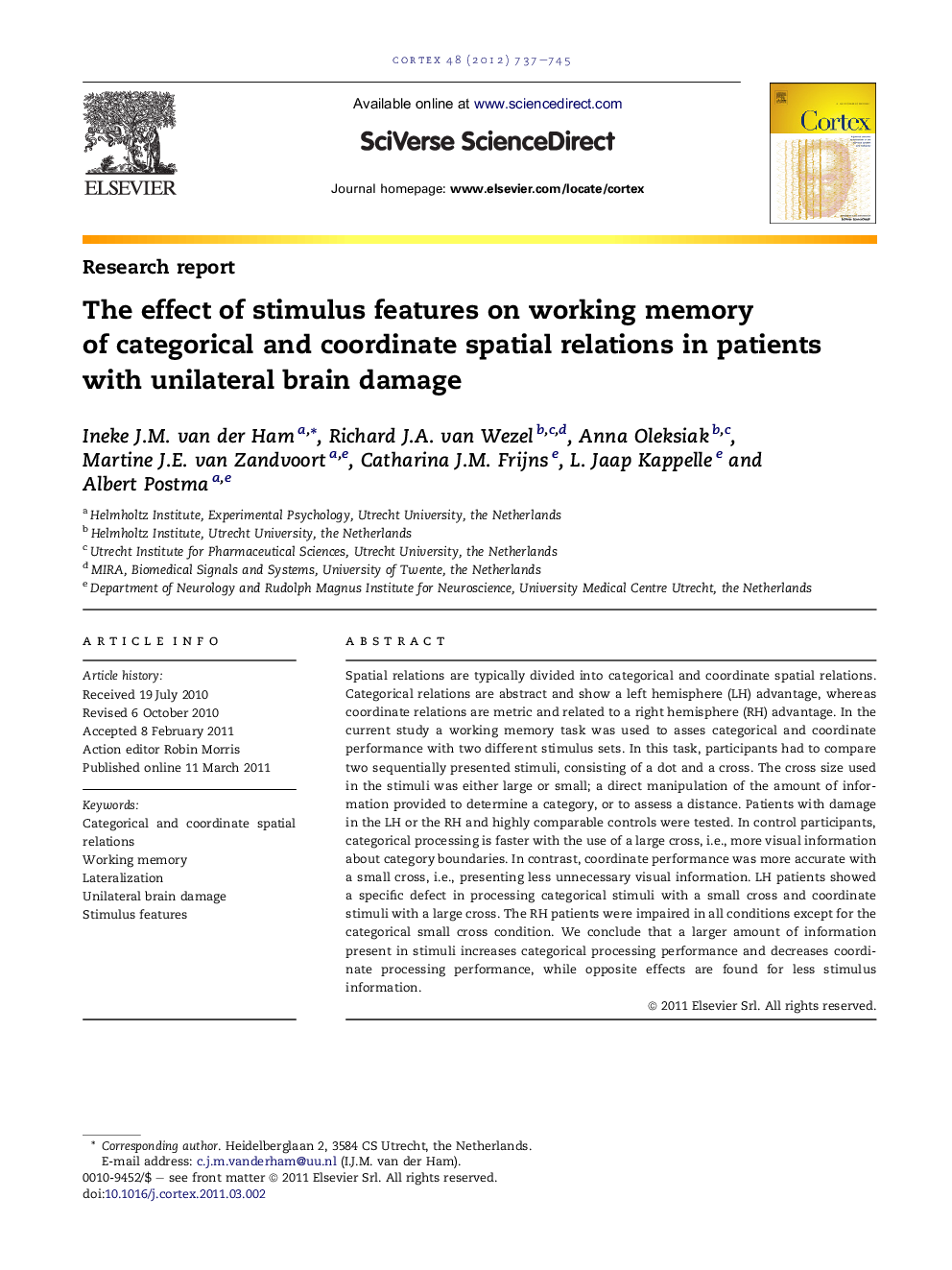| Article ID | Journal | Published Year | Pages | File Type |
|---|---|---|---|---|
| 942252 | Cortex | 2012 | 9 Pages |
Spatial relations are typically divided into categorical and coordinate spatial relations. Categorical relations are abstract and show a left hemisphere (LH) advantage, whereas coordinate relations are metric and related to a right hemisphere (RH) advantage. In the current study a working memory task was used to asses categorical and coordinate performance with two different stimulus sets. In this task, participants had to compare two sequentially presented stimuli, consisting of a dot and a cross. The cross size used in the stimuli was either large or small; a direct manipulation of the amount of information provided to determine a category, or to assess a distance. Patients with damage in the LH or the RH and highly comparable controls were tested. In control participants, categorical processing is faster with the use of a large cross, i.e., more visual information about category boundaries. In contrast, coordinate performance was more accurate with a small cross, i.e., presenting less unnecessary visual information. LH patients showed a specific defect in processing categorical stimuli with a small cross and coordinate stimuli with a large cross. The RH patients were impaired in all conditions except for the categorical small cross condition. We conclude that a larger amount of information present in stimuli increases categorical processing performance and decreases coordinate processing performance, while opposite effects are found for less stimulus information.
